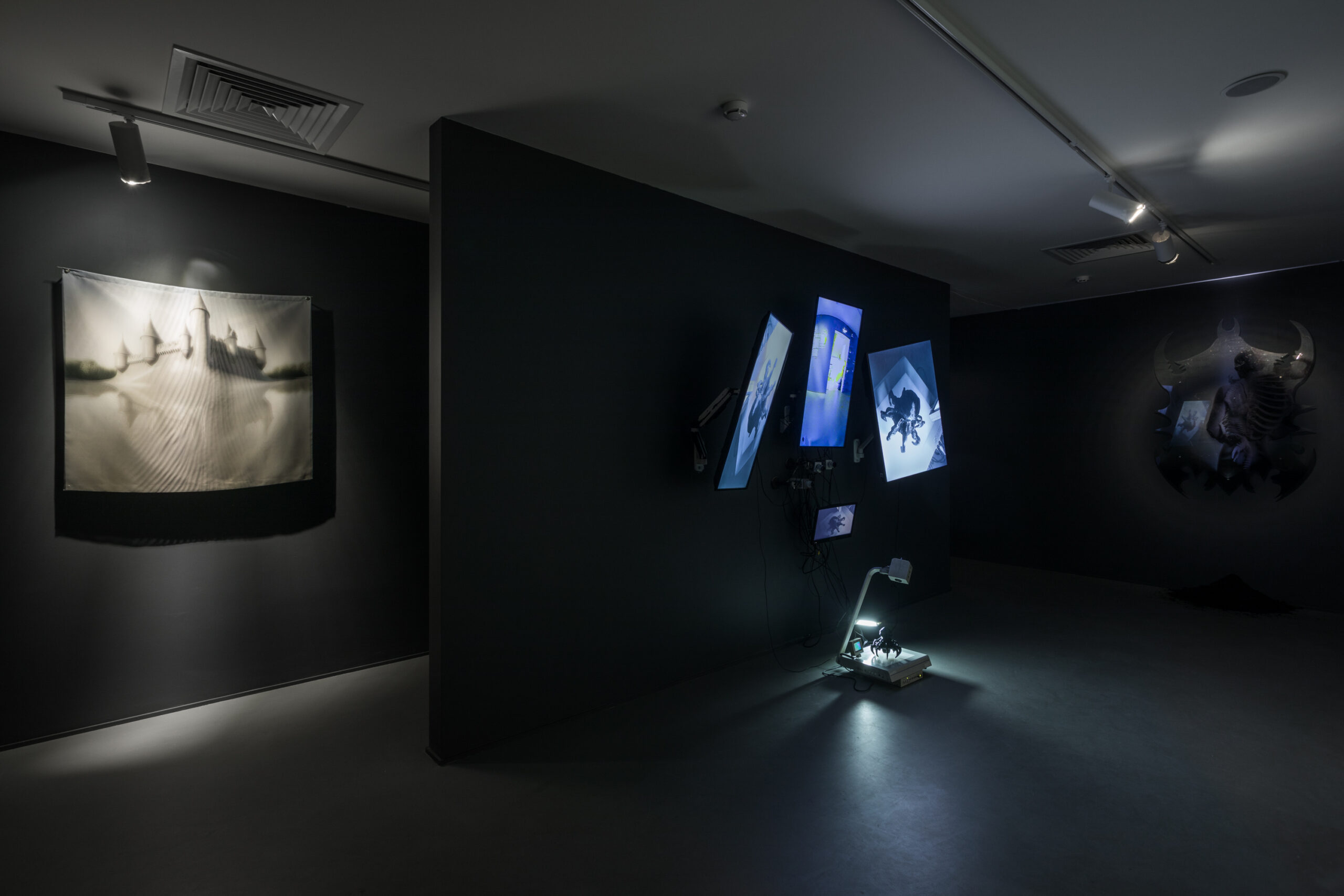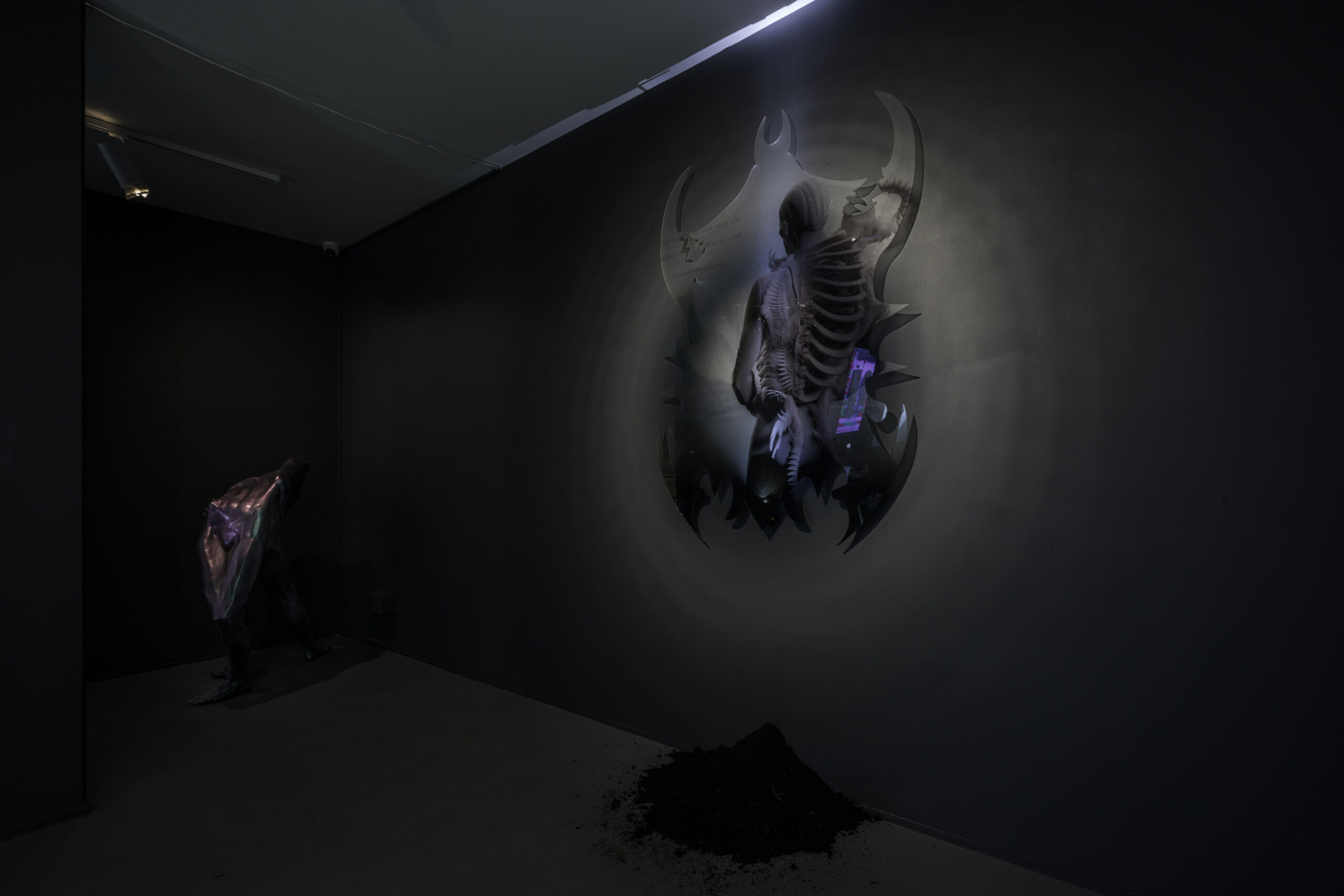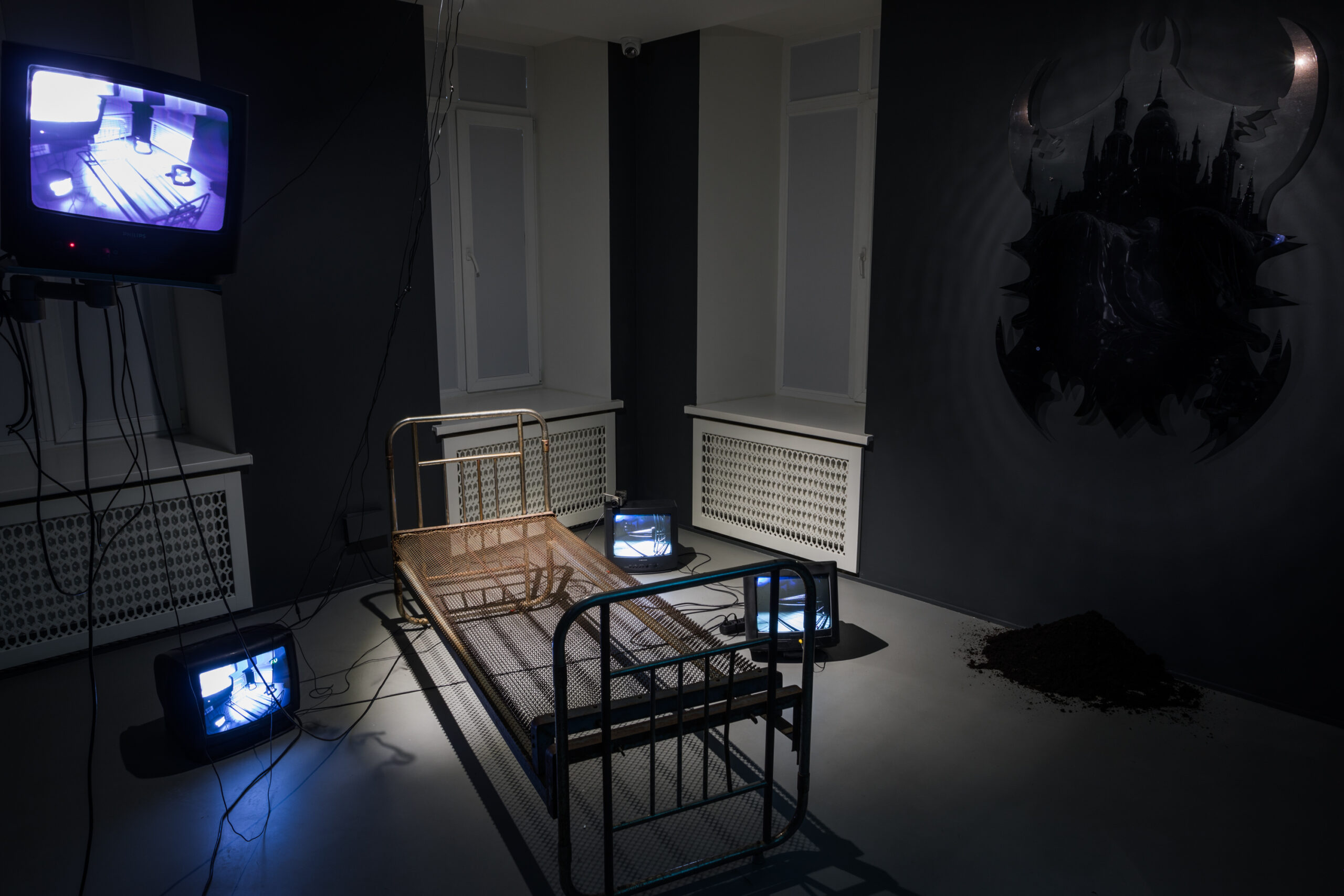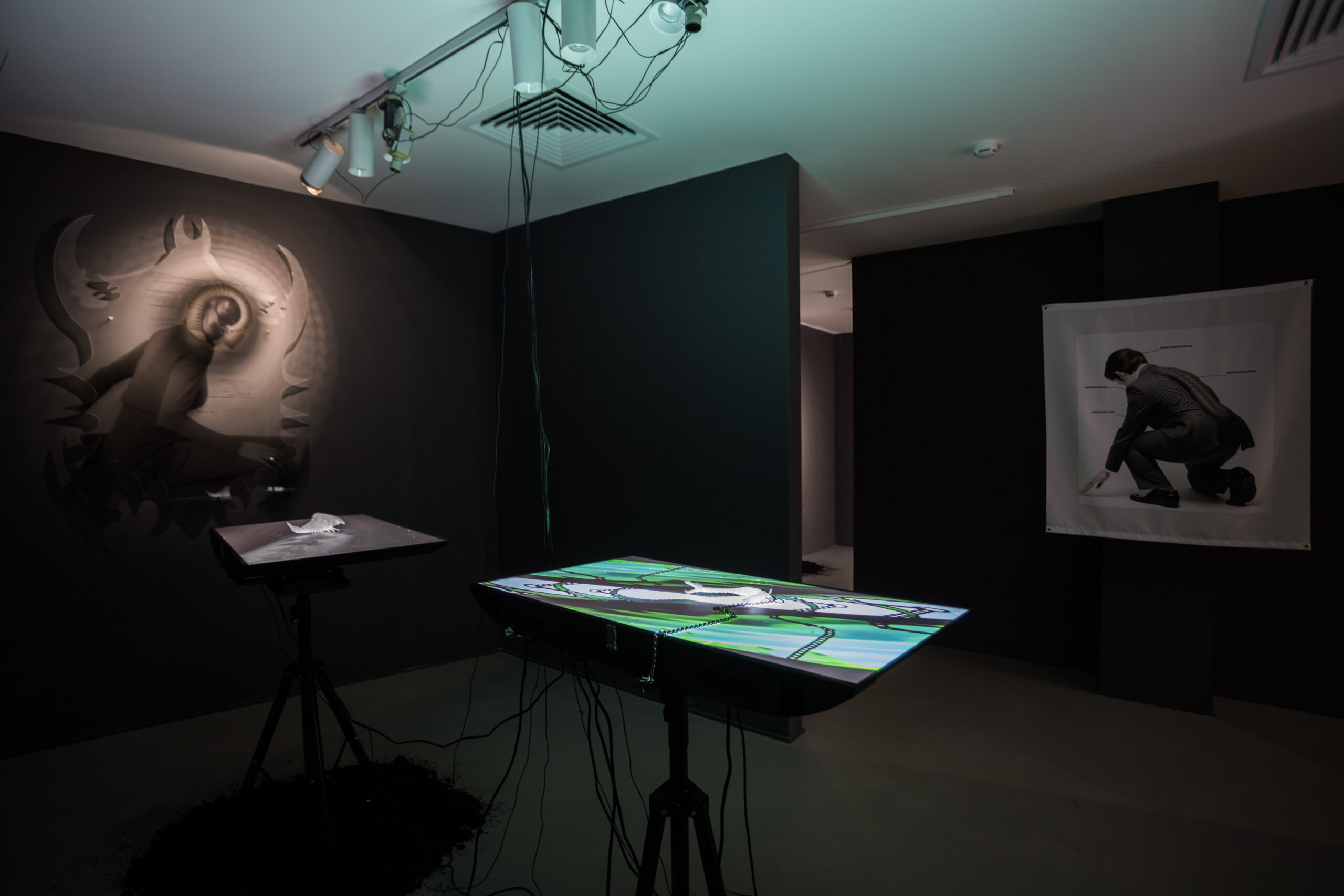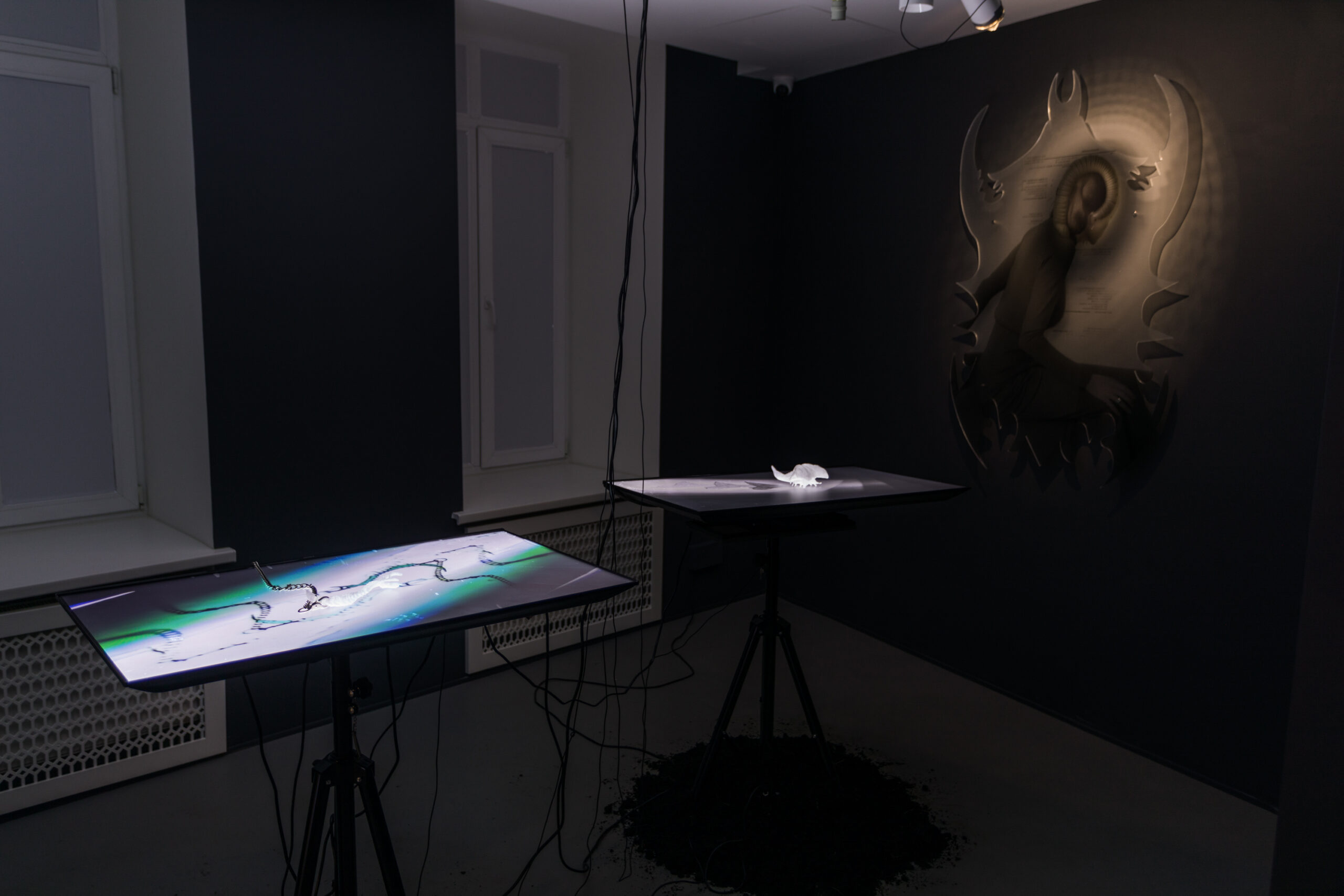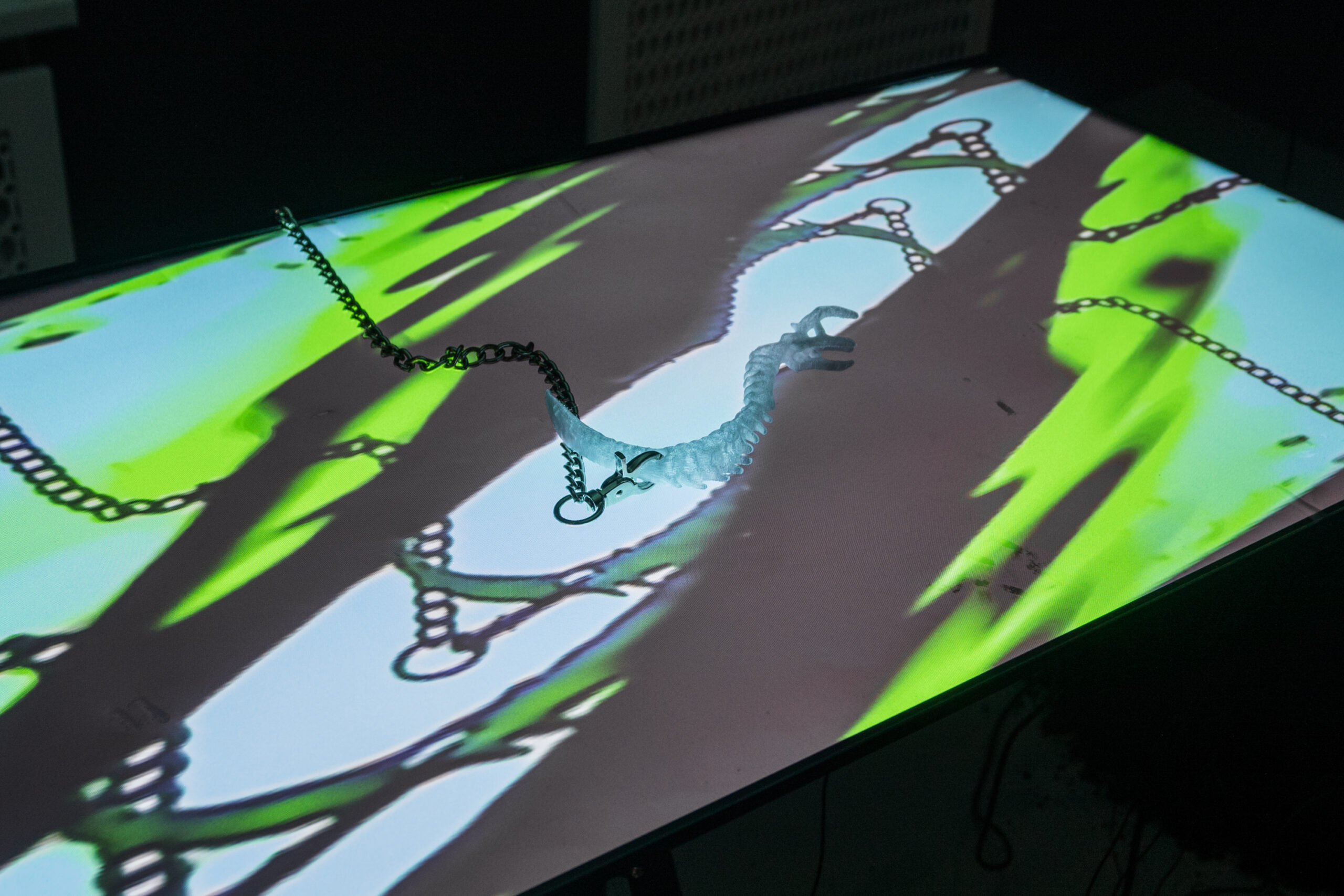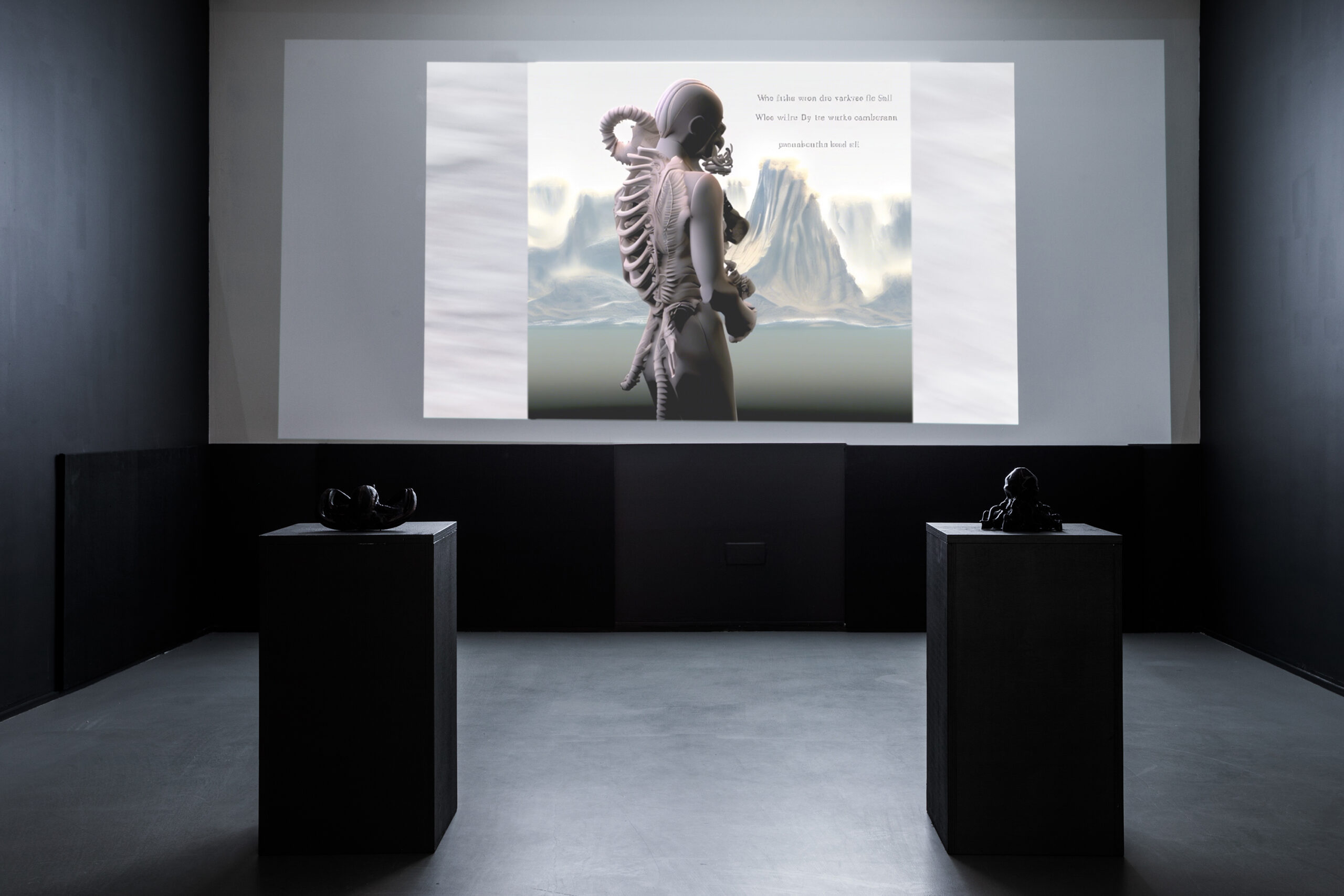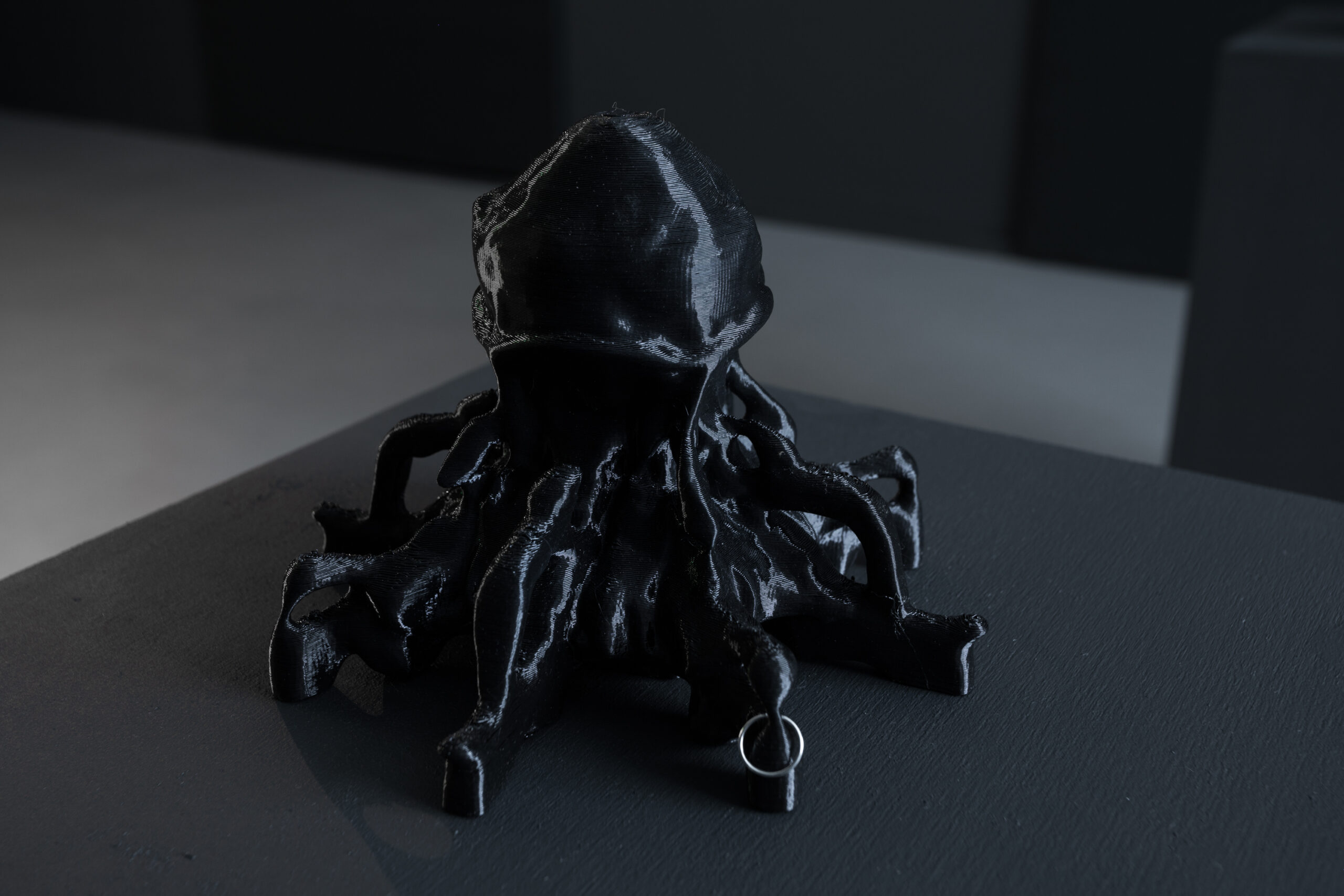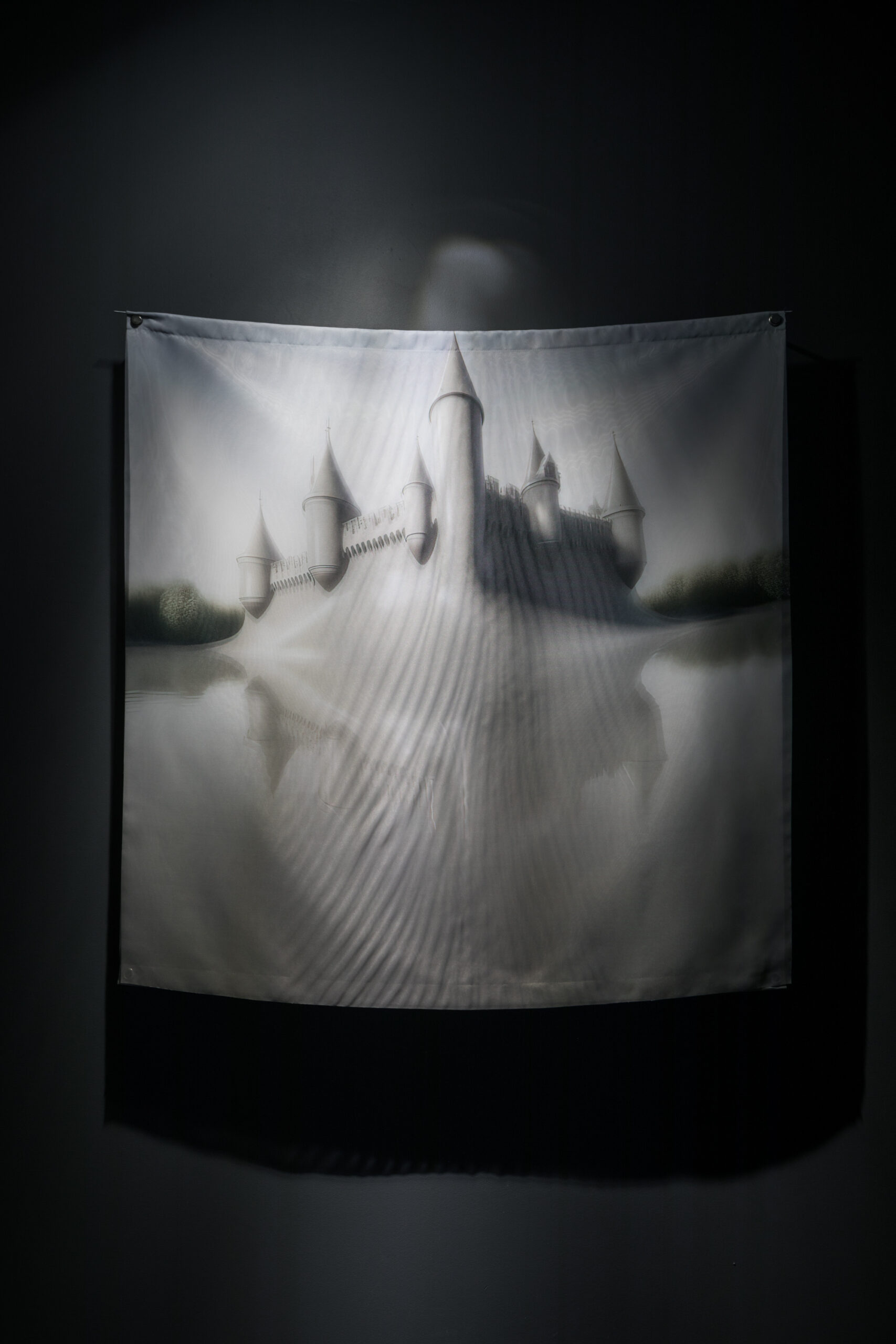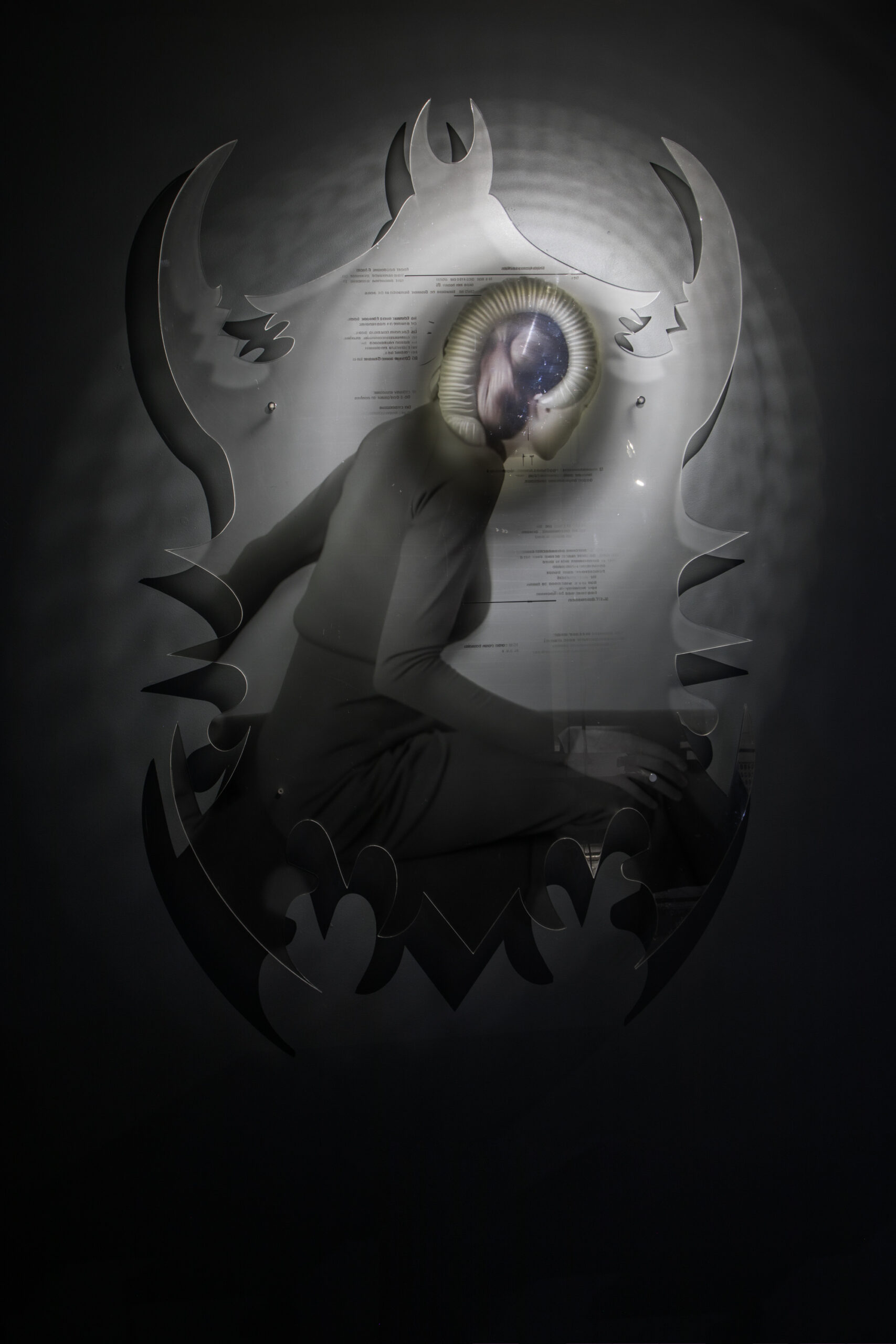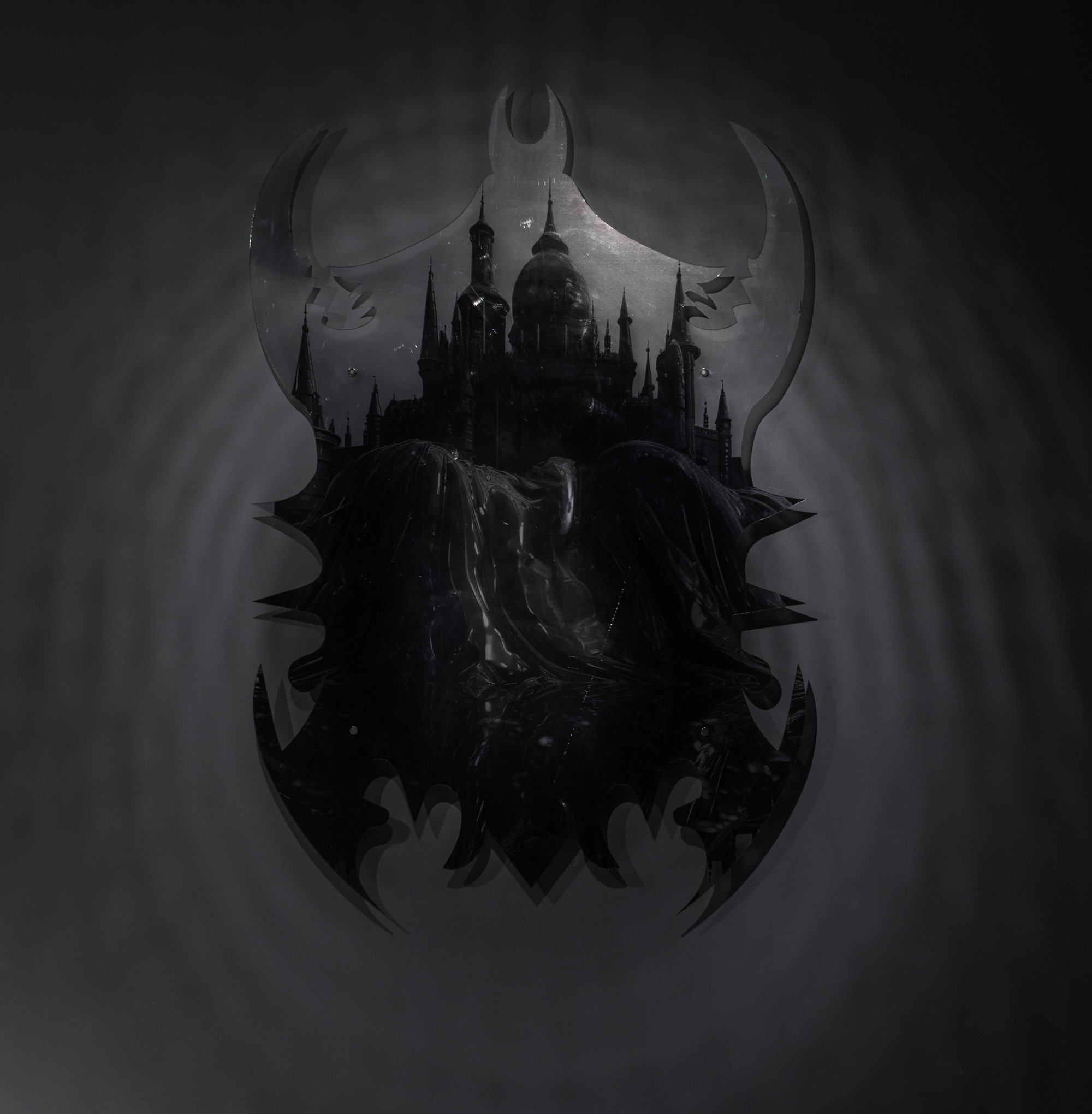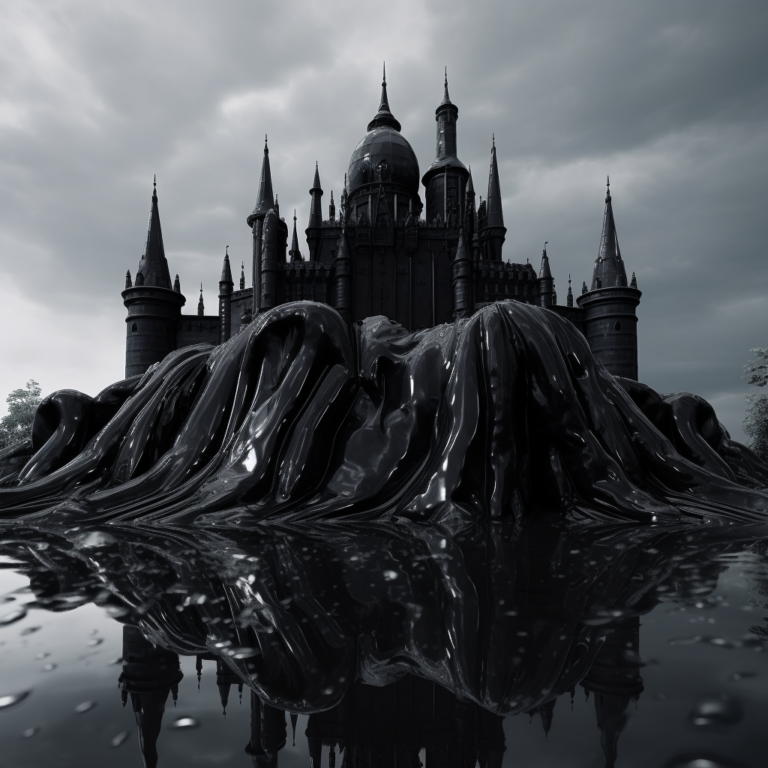
Mediaparasite
EXHIBITION DESCRIPTION
SISTEMA GALLERY presents the experimental project “Mediaparasite” by the barkal x wiiu wiiu group curated by Nadya October, which will feature interactive video sculptures, installations, 3D-printed objects, digital works and video art. The Mediaparasite project is about experiences with the influence of the information realm on human consciousness, the way it transforms us by encoding our thought processes and directing our actions. The most famous researcher working with this theory is Marshall McLuhan, in 1964 he published the book “Understanding Media: The Extensions of Man”. McLuhan considered the means of communication not just as a medium for transmitting information (in his time it was television and radio), but as technical systems that are external “extensions” of the human nervous system, determining our behavior, choices, and thinking. The book gained new popularity with the spread of computers and the Internet in the 1990s; its basic theses do not lose relevance to this day, only the form and depth of the impact of media on consciousness are intensifying.
Being in complete fusion with digital technologies and media, modern man gradually develops anxiety, feeling that they paralyze their personality, block their own will, genuine thoughts, desires – overloading with information, influencing by algorithms of data selection and neural networks, replacing real images with the distorted (transformed) ones on the screen. The artists develop the idea that a new form of life is formed in this way, generated by the symbiotic and parasitic coexistence of the digital world and man. At this stage — on a psychological level: humans are attracted to comfort and oblivion in this fusion. While the human psyche is in a daze, the digital world, developing and expanding, is gaining more autonomy in the processes of its work, for example, artificial intelligence can program itself, creating unpredictable algorithms.
In the Mediaparasite project, the artists barkal x wiiu wiiu wiiu aim to create a sense of subjectivity, the gradual dominance of technology in this symbiosis with man. The interactive video sculptures presented in the exhibition come into contact with humans, observing with their video cameras, feeling with their sensors and providing a reaction through the screen, but not the usual reflection, but a reaction based on the “nature” of their algorithms. The branching wires resemble the throbbing veins of a living creature, which, as it expands, takes root in the ground and becomes an organism. The exhibition space is complemented by generated images of “mediaparasites” and 3D-printed sculptures. The exhibition resembles a temple where the altars of a new cult are placed, it is the den of the “swarm” — the supremacy of a new form of life, where man is no more than an object that has lost the position of its anthropocentric supremacy, left with some room on a bed in the corner. Thus, the project is also linked to the broader theme of a posthuman future, in which hitherto unknown transformations of matter may take place.
The barkal x wiiu wiiu group’s method of work, when inanimate “strange objects” in the exhibition are presented as if they are endowed with subjectivity and have their own “inner life” beyond our perception, is a method of so-called object-oriented art, the active development of which started in Europe and the United States in the mid-2010s and has now spread throughout the world. The stimulus for the emergence of this trend and its theoretical basis was the new trend of philosophy that appeared in the 2000s – speculative realism — and the object-oriented ontology associated with it, reflecting mainly on the independence of the extra-human world (microbes, viruses, trees, rocks, space objects, any things, etc., here we can continue the list — digital algorithms): the existence of “things” is not limited by our perception, they have their own existence (“reality”). As one of the main philosophers of this direction Graham Harman writes: “The world is not a world revealed to people; to think about reality beyond our thinking is not nonsense, it is a necessity”.
The attempt to reflect on this theme leads artists of object-oriented art to turn to science fiction, to reflect on extra-human and extraterrestrial life forms (xenobiology), and the expositions of exhibitions often resemble science fiction movie sets. Artists of this trend as a whole, like barkal x wiiu wiiu wiiu, often use the form of tentacles, which are associated with something “other”. This is not just due to the influence of popular culture. The octopus form was used by Howard Lovecraft when creating an alien ancient creature in the short story “The Call of Cthulhu” (1926), where the writer demonstrates his mastery of conveying “the horror of what is incomprehensible”; this story became “exemplary” in analytical articles by philosophers of speculative realism.
About the artists
The group barkal × wiiu wiiu is a duo of artists Vera Barkalova and Maxim Anpilogov, formed in 2022. In 2023, the group became residents of the Garage Museum Workshops. In 2024, the group’s video sculpture was shown at the Electric Dreams exhibition at Artemyev Gallery as part of the III Biomechanics Multimedia Festival of Contemporary Music.
barkal × wiiu wiiu work with exploring, inventing keyboards and hacking the usual forms of video and audio devices. The artists have over 100 inventions to their credit — video mixers and various audio and video tools. The artists often work in the genre of installation, which is a collage of all sorts of different media – multimedia sculptures, music and video generations. The group also often turns to the form of musical performance in the genre of synthesized dark experimental. In their projects barkal × wiiu wiiu explore the dark future, technology, biohacking and non-fiction.
Vera Barkalova was born in Moscow in 1990. In 2012 graduated from the Ostankino Moscow Institute of Television and Radio Broadcasting with a degree in Journalism, and in 2015 graduated from the Rodchenko School of Photography and Multimedia, workshop of Igor Mukhin. Through the combination of sculpture, photography, video and sound, she reflects on corporeality, the mutual influence of man and nature. In 2018, two solo exhibitions of the artist were held — “Fading Beauty” in the “Apothecary Garden” and “Young but not broken” in the “Cosmos” pavilion of the All-Russian Exhibition Center.
Maxim Anpilogov was born in 1996 in Khabarovsk. In 2019 graduated from the Pacific State Polytechnic University, Department of Information Security. His artistic activity is related to video and audio-analog tools, which are invented and designed by the artist himself. In 2021, Anpilogov participated in the exhibition “Evening in memoriam of Papa Srapa” at the House of Radio, in 2022 — in the project “Pechalitca” at the House of Architect.
